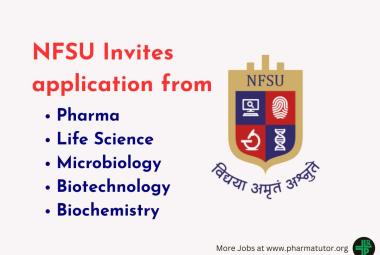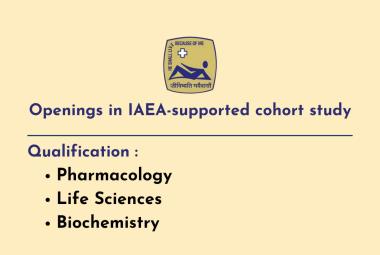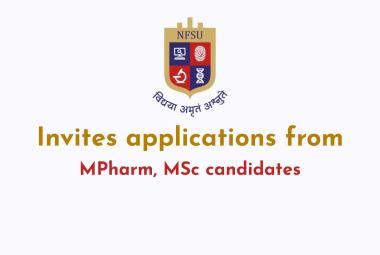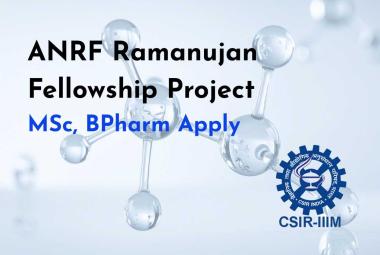{ DOWNLOAD AS PDF }
ABOUT AUTHORS:
Vishwanadham Yerragunta*, E.Sathish Reddy, M.Kishore, Hari Om Prakash rao, Ayesha Sadia, Ayesha Saba, Syeda Kausar Fatima
Department of Pharmaceutical Chemistry, Prathap Narendar Reddy College of Pharmacy,
Pedda shapur, Shamshabad, Hyderabad, Telangana.
vishwanadham.y@gmail.com
ABSTRACT:
Acridoneis an organic compound containing a carbonyl group attached to the 9 position. It may be synthesized by the self-condensation of N-phenylanthranilic acid Acridone and its derivatives can be synthesized by a number of methods such as Ullmann condensation, by benzyne mechanism, by radical reaction of quinines etc. acridone nucleus due to its variety of pharmacological activities. These pharmacological activities include anticancer, antimicrobial, antiviral, antimalarial and anti-inflammatory activities. This review article literature survey summerizes the synthesis and pharmacological activities of acridone and its derivatives.
INTRODUCTION:
Acridoneis an organic compound. Acridones are biologically active fused heterocyclic rings. Acridone constitutes the scaffold of some synthetic compounds with various pharmacological activities. Scaffold known to associate with several biological activities. It has carbonyl group at 9th position and nitrogen at 10th position. Acridone is also known by the name of 9(10H)-acridinone, acridine-9-one, 9-acridanone, acridinone and It is oxidized product of acridine. It may be synthesized by the self-condensation of N-phenylanthranilic acid (1).
Most recent derivatives still in its development stage, including 3-chloro-6-(2-diethylamino-ethoxy)-10-(2-diethylamino-ethyl)-acridone, have shown some promise as a potential antimalarial drugs (2).
Molecular Weight: 195.22
Molecular formula: C13H9NO
IUPAC name: 10H-acridin-9-one
SYNTHESIS OF ACRIDONE:
Ullmann synthesis:
Ullmann synthesis involves the condensation of o-halobenzoic acids with substituted aniline in the presence of copper powder and potassium carbonate to give N-(substituted phenyl) anthranillic acids. The N-(substituted phenyl) anthranillic acids cyclize to acridone/substituted acridones under the influence of strong acids (3).
RECENT REVIEW OF LITERATURE:
· Stankiewicz-Drogo- A et al (4):
A new goup of acridone derivatives, obtained by reaction of acridone-4-carboxylic acid derivatives with aromatic amines, was tested to determine the inhibitory properties toward the NS3 helicase of hepatitis C virus (HCV).
· Jumat Salimonet.al(5): The newly synthesized compounds were characterized
Synthesis of diphenylamine-2,4′-dicarboxylic acid ,Synthesis of 9(10H)-acridone-2-carboxylic acid,Synthesis of 9(10H)-acridone-2-methylcarboxylate4, by IR, NMR and C, H, N, S analyses. All newly synthesized compounds were screened for their antibacterial (Staphylococcus aureus, Streptococcus viridansand Escherichia coli) and antifungal (Gibberela, Cercospora arachidicola, Physolospora piricola and Fusarium oxysporum) studies. The results revealed that all synthesized compounds have a significant biological activity against the tested microorganisms.
· Claudia S Sepúlveda et.al (6):
a series of N-substituted acridone derivatives was synthesized and evaluated against two haemorrhagic fever viruses (HFV).
· Chao Huanget. al (7):
A series of polyhalo acridone heterocyclic compounds were synthesized and evaluated for their in vitro antitumor activity. It was noteworthy that halogen atoms were present at the 1, 3 and 4 sites of the compounds, and an amide group or a cyano group was at the 2 site. The antitumor bioactivity screening revealed that all the compounds exhibited potent antitumor activity.
Belmont P et.al (8):
Acridine derivatives are interesting chemotherapeutic agents that were first used as antibacterial and antiparasite agents. In this review we wish to concentrate our attention on the anticancer properties of acridines used in clinics since the 1970's. Based on recent results, an outlook on antitumour acridine chemotherapy will be proposed. The biological activity of acridines is mainly attributed to the planarity of these aromatic structures, which can intercalate within the double-stranded DNA structure, thus interfering with the cellular machinery. Recent understanding of the mode of action of acridines leads to continuous and exciting research in this heterocyclic family.
· Grzegorz Cholewiñski et. al (9):
Acridine derivatives constitute a class of compounds that are being intensively studied as potential anticancer drugs. Acridines are well-known for their high cytotoxic activity; however, their clinical application is limited or even excluded because of side effects.
Numerous synthetic methods are focused on the preparation of target acridine skeletons or modifications of naturally occurring com-pounds, such as acridone alkaloids, that exhibit promising anticancer activities. They have been examined in vitro and in vivo to test their importance for cancer treatment and to establish the mechanism of action at both the molecular and cellular level, which is necessary for the optimization of their properties so that they are suitable in chemotherapy. In this article, we review natural and synthetic acridine/acridone analogs, their application as anticancer drugs and methods for their preparation.
· Ryo Nishioet. al (10): Synthesis of Acridone Derivatives Using Polymer-Supported Palladium and Scandium Catalysts.
Pharmacological Activities of acridone Derivatives:
- A new goup of acridone derivatives, obtained by reaction of acridone-4-carboxylic acid derivatives with aromatic amines, was tested to determine the inhibitory properties toward the NS3 helicase of hepatitis C virus (HCV) (11).
- anti-bacterial properties (acriflavine,aminacrine, ethacridine), their effectiveness against parasite infections (quinacrine, acranil).
- Anti- microbial drugs.
- anti - cancer drugs (nitracrine, amsacrine)
CONCLUSION:
This reviewattempt has been made to compile the various aspect of acridone such as its method of synthesis, pharmacological uses and recent literature. The Present review work concludes that although various methods are available for the synthesis but the most commonly used method.
Several acridine/acridone analogs are in use in clinics due to their anti-bacterial properties (acriflavine,aminacrine, ethacridine), their effectiveness against parasite infections (quinacrine, acranil), anti microbial drugs. and as anti - cancer drugs (nitracrine, amsacrine).
REFERENCE:
1. C. F. H. Allen and G. H. W. McKee. "Acridone". Organic Syntheses, Coll. 1943; Vol. 2, p.1 (1943); Vol. 19, p.1 (1939).
2. Hisashi Fujioka, Yukihiro Nishiyama, Hiroshi Furukawa, And Nobuo Kumada. "In Vitro and In Vivo Activities of Atalaphillinine and Related Acridone Alkaloids against Rodent Malaria". Antimicrobial Agents and Chemotherapy, 1989; 33(1): 6–9.
3. F.G. Mann; B. C. Saunders. Practical Organic Chemistry. A New Impression Publication. 2007; 4th ed.; p. 217.
4. Stankiewicz-Drogo- A, Dorner B, Erker T, Boguszewska-Chachulska AM .Synthesis of new acridone derivatives, inhibitors of NS3 helicase, which efficiently and specifically inhibit subgenomic HCV replication, J Med Chem. 2010; 22; 53(8); 3117-26.
5. Jumat Salimon , Nadia Salih, Emad Yousif, Ayad Hameed, Ayad Kreem Synthesis and pharmacological evaluation of 9(10H)-acridone bearing 1,3,4-oxadiazole derivatives as antimicrobial agents, Arabian Journal of Chemistry, 2010; 3(4); 205–210.
6. Claudia S Sepúlveda, Mirta L Fascio, María B Mazzucco, Maite L Docampo Palacios, Rolando F Pellón, Cybele C García, Norma B D’Accorso and Elsa B Damonte, Synthesis and evaluation of N substituted acridones as antiviral agents against haemorrhagic fever viruses, Antiviral Chemistry & Chemotherapy, 2008; 19:41–47.
7. Chao Huang, Sheng-Jiao Yan, Xiang-Hui Zeng, Bo Sun, Min-Bo Lan and Jun Lin , Synthesis and evaluation of the antitumor activity of polyhalo acridone derivatives , RSC Adv., 2015; 5, 17444-17450.
8. Belmont P, Bosson J, Godet T, Tiano M, Acridine and acridone derivatives, anticancer properties and synthetic methods: where are we now? Anticancer Agents Med Chem. 2007 Mar; 7(2); 139-69.
9. Grzegorz Cholewinski, Krystyna Dzierzbicka, Aleksander M. Kodziejczyk, Natural and synthetic acridines/acridones as antitumor agents: their biological activities and methods of synthesis, pharmalogical reports, 2011; 63(3); 305-336.
10. Ryo Nishio, Stephane Wessely, Masaharu Sugiura, and Sh- Kobayashi, Synthesis of Acridone Derivatives Using Polymer-Supported Palladium and Scandium Catalysts, J. Comb. Chem., 2006; 8 (4); 459–461.
11. Stankiewicz-Drogo- Anna, Dorner Bernd, Erker Thomas, Boguszewska-Chachulska Anna M, Synthesis of new acridone derivatives, inhibitors of NS3 helicase, which efficiently and specifically inhibit subgenomic HCV replication, Journal of medicinal chemistry, 2010; 53(8); 3117-26
REFERENCE ID: PHARMATUTOR-ART-2364
|
PharmaTutor (Print-ISSN: 2394 - 6679; e-ISSN: 2347 - 7881) Volume 3, Issue 10 Received On: 05/06/2015; Accepted On: 11/06/2015; Published On: 01/10/2015How to cite this article: V Yerragunta, ES Reddy, M Kishore, HOP Rao, A Sadia, A Saba, SK Fatima; A Review on Acridone Derivatives and its Importance; PharmaTutor; 2015; 3(10); 27-29 |
NOW YOU CAN ALSO PUBLISH YOUR ARTICLE ONLINE.
SUBMIT YOUR ARTICLE/PROJECT AT editor-in-chief@pharmatutor.org
Subscribe to Pharmatutor Alerts by Email
FIND OUT MORE ARTICLES AT OUR DATABASE









